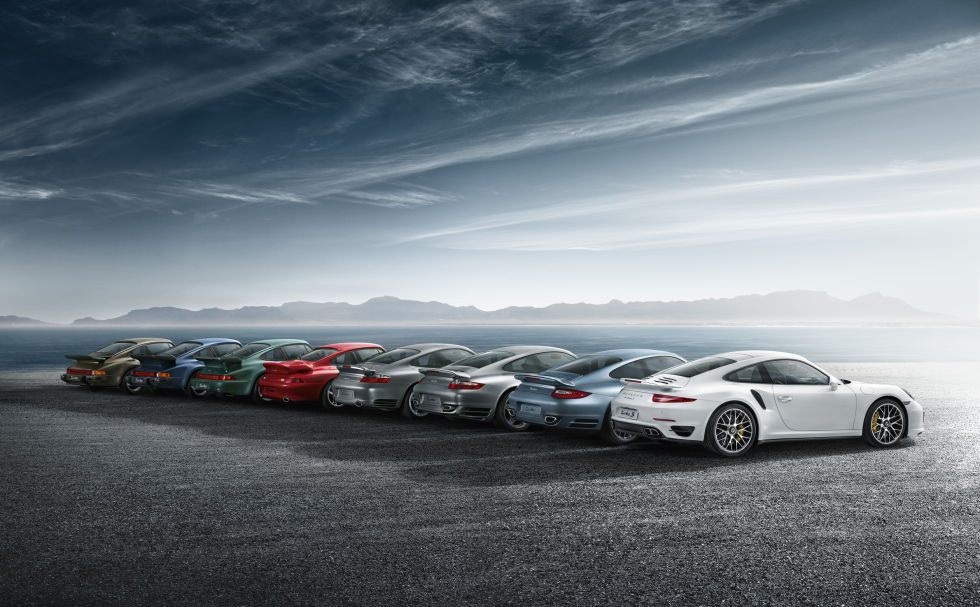Porsche 911: 52 years of staying true to its roots
Ars Technica 2015-08-18
Porsche
A family portrait of the 911 Turbo throughout the ages. Click through the gallery to see the shape of the 911 gently evolve over five decades.
8 more images in gallery
The Porsche 911 is a testament to perseverance. Even back in 1963, it was clear that putting the engine behind a car's rear axle entailed compromises over front- or even mid-engined cars—clear to everyone outside of Porsche's Stuttgart base, that is. That was the year the company unveiled its 901 at the Frankfurt auto show. (The name was changed to "911" after Peugeot asserted that its trademark extended to any three-digit number with a 0 in the middle). The first Porsche 911 went on sale in 1964, and the car has been a cornerstone of the marque ever since. During those 51 years, Porsche engineers have mitigated the problems associated with a rear-engined layout, developing the 911 into one of motoring's greatest living legends.
1964-1968
Rear-engined cars had become a bit of a Porsche family trademark by this point, including the Volkswagen Beetle and Porsche 356. The Porsche 911 of 1964 followed suit. It would be Porsche's largest and most expensive sports car to date, with four seats and a 2l engine. The car's styling was thanks to "Butzi" Porsche, grandson of company founder Ferdinand Porsche (who created the Beetle). Another grandson, Ferdinand Piech, was the engineer responsible for developing the car's new engine, a six-cylinder boxer (two rows of three cylinders, 180 degrees opposed from each other), air-cooled and with overhead camshafts.
OK, the rear seats were (and still are) tiny, so it's more of a 2+2 than a real four-seater. But even the earliest 911s were that marvellous blend of engaging sports car and practical transport. The 128hp (96kW) engine revved to 6800rpm, which was a lot for 1964. With not much weight to move around (~2360lbs/1070kg) it was fast for its time. Early road tests put the 0-60mph time between seven and nine seconds, with a top speed around 130mph (209km/h). By 1966 there were several versions on sale: the regular 911, a more powerful 911S (158hp/118kW), a Targa with a removable roof section, and a more affordable 4-cylinder version called the 912.
Read 37 remaining paragraphs | Comments
